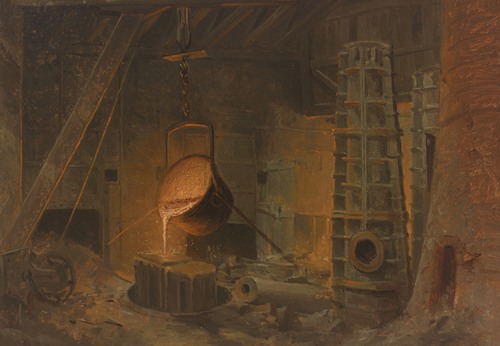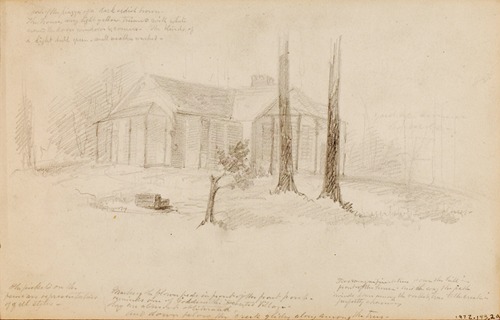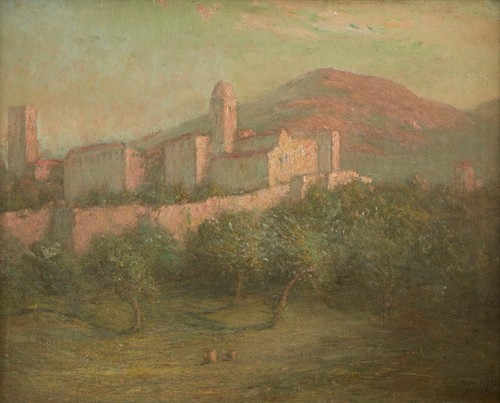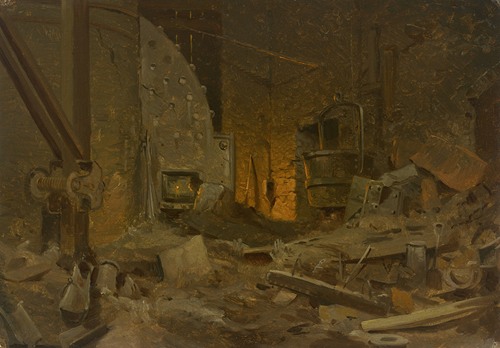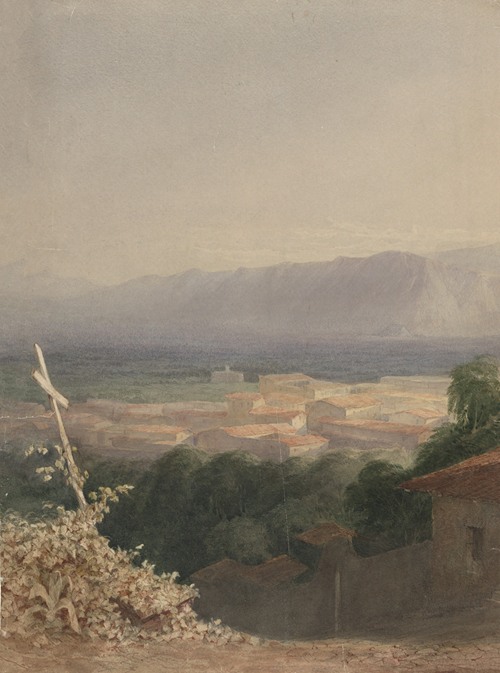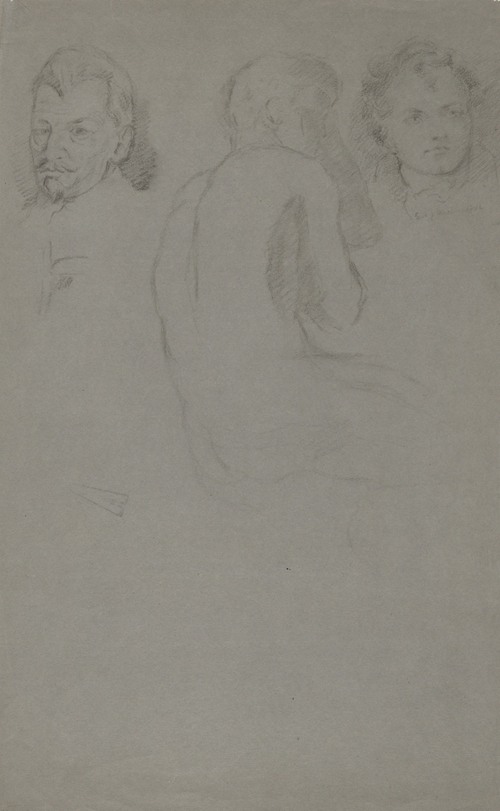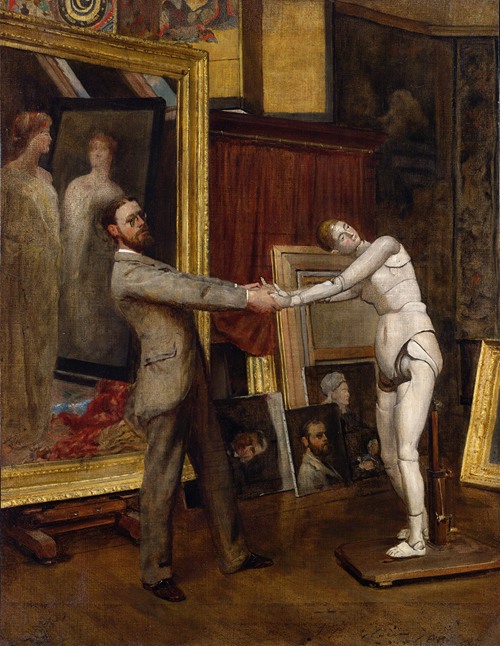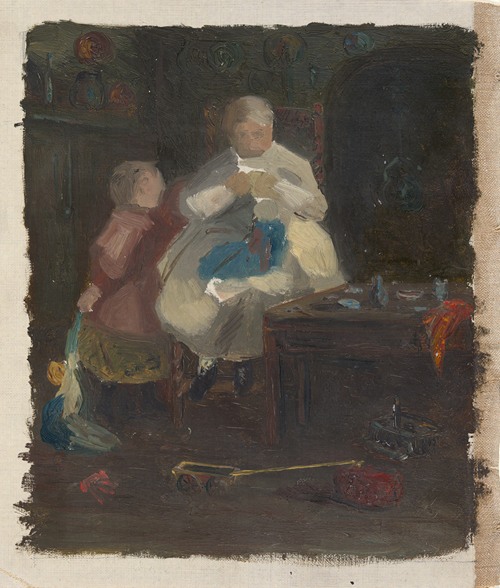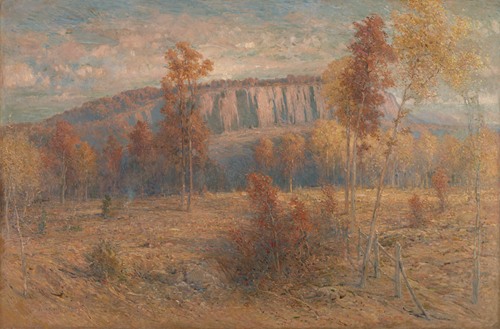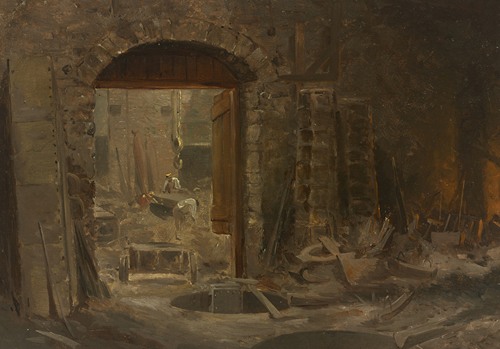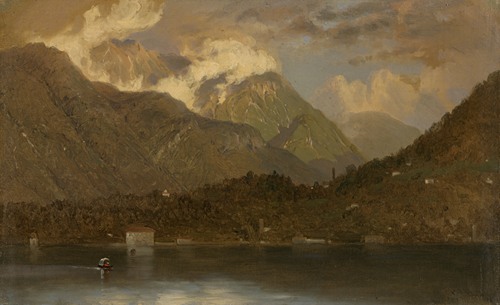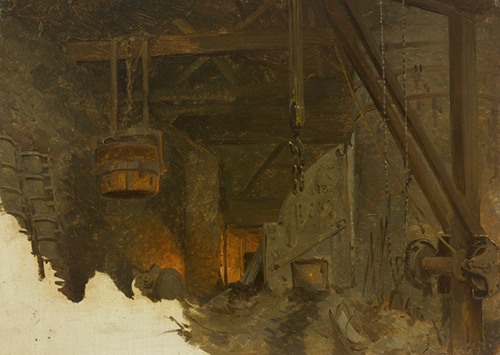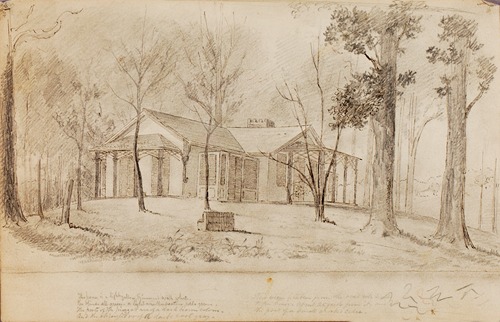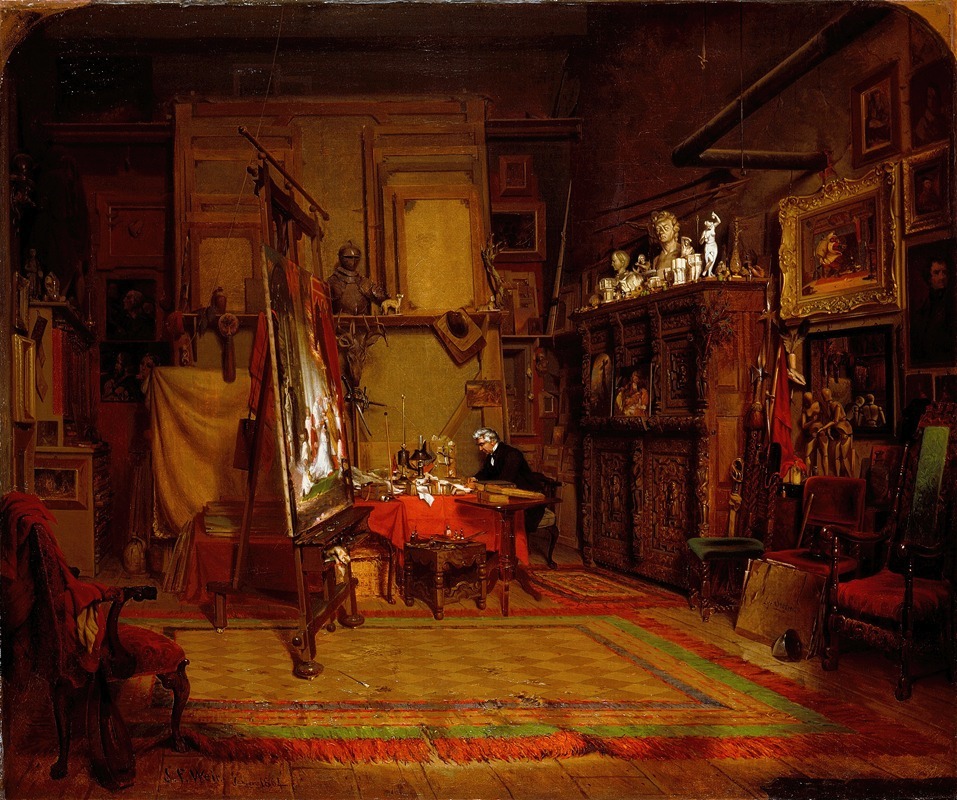
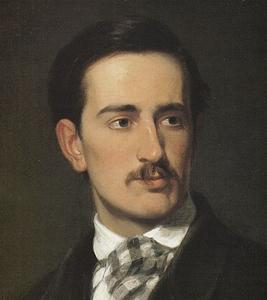
John Ferguson Weir was an American painter, sculptor, writer, and educator. He was a son of painter Robert Walter Weir, long-time professor of drawing at the Military Academy at West Point. His younger brother, J. Alden Weir, also became a well-known artist who painted in the style of American Impressionism.
He was born August 28, 1841, at West Point, New York, and studied with his father Robert Walter Weir and at the National Academy, New York. As a young man, he worked on still life paintings and became proficient at landscapes. In 1862, around the time of his 21st birthday, he was commissioned by the art patron Robert Leighton Stuart to paint a landscape scene of West Point which he named Hudson Highlands, West Point, Summer Afternoon. It is also known as View of the Hudson Highlands, West Point. This commission introduced him to the art world of New York City, and led to his renting a small room in the Tenth Street Studio, where he became acquainted with many of the rising young artists of the day.
His next major work was An Artist's Studio, depicting his father painting in his studio. It was finished in 1864 and then exhibited at the Athenaeum Club and the National Academy of Design. The work became his first major sale, and led to his election as an associate of the National Academy.
Weir became fascinated with the West Point Iron and Cannon Factory, across the Hudson from West Point, a factory that manufactured most of the large guns for the Union during the Civil War. His third major work was The Gun Foundry, 1866, an unusual interior factory scene that depicts the casting of a Parrott Gun. This work was well received at the 1866 spring exhibition of the National Academy of Design and led to his election as a full academician.
His fourth major painting was Forging the Shaft, 1868. It was also painted at the West Point Foundry, but after the end of the Civil War, and showed the creation of a great shaft for the propeller of an ocean liner. Exhibited at the Academy in 1868, it was also very well received. It was destroyed by fire in 1869, and Weir painted a replica between 1874 and 1877.
In 1868 he studied abroad. After his return he was named first director (later dean) of the School of Fine Arts at Yale University. He served in that position from 1869 to 1913. While establishing the foundations of the Yale School of Fine Arts, John enlisted the help of his brother, Julian Alden Weir, who at the time was studying at the École des Beaux-Arts in Paris.
In 1866 John married Mary Hannah French, daughter of West Point professor The Rev. John W. French. Their daughter, Edith Dean Weir, (wife of James De Wolf Perry) was a noted painter of miniatures, studying under Lucia Fairchild Fuller.
Weir also served in the Union Army briefly at the beginning of the Civil War. He died in Providence, Rhode Island on April 8, 1926.
